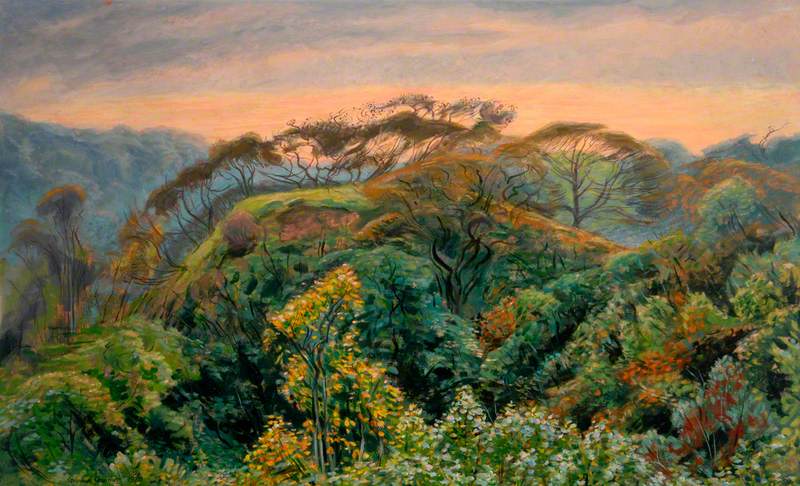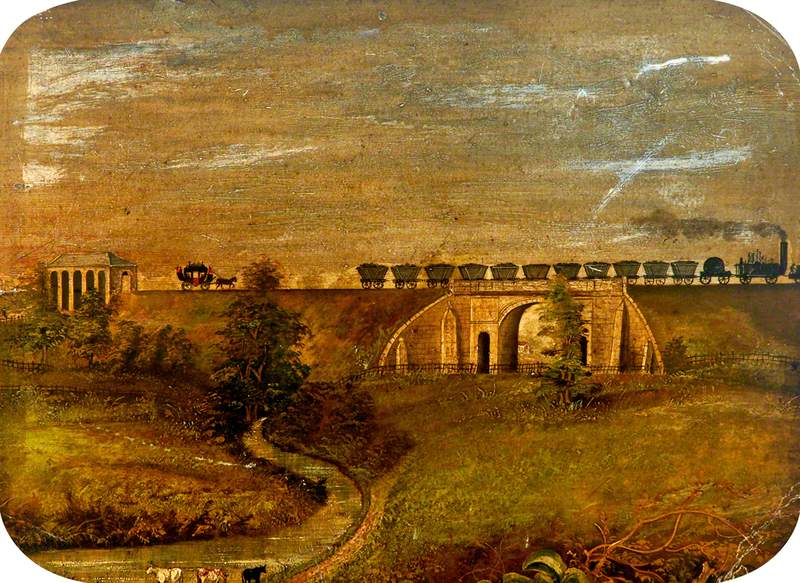For well over a century, the North East of England has been known as one of the heartlands of England’s industrial history, with the area standing as the base for various industries ranging from shipbuilding to coal mining. For nearly 170 years Teesside was synonymous with blast furnaces and smoggy skies, and the river associated with murky waters and huge shipbuilding yards.
But there is another side to the North East that is little shown when people delve into its history. Teesside may be known for its heavy industrial works and vintage images of black skies from so much pollution, but there was a contrast between the daily lives of Teessiders and the vibrant countryside that their towns and villages were nestled in.
-
Evening in the Dene
Evening in the Dene 1970Born in Sheffield in 1922, Deryck Stephen Crowther studied at the Royal College of Art and, at the height of his career, was commissioned to paint two oils for the Sultan of Oman. He painted many scenes of urban life in working class Hartlepool, but this painting shows a softer setting of a summer’s evening in the countryside outside of the port-town.
Deryck Stephen Crowther (1922–2007)
Oil on board
H 56 x W 91.5 cm
Hartlepool Museums and Heritage Service
-
Middleton II
Middleton II 1990In sharp contrast to the soft countryside scenes around Hartlepool, this painting shows the derelict remains of Middleton. An island in the middle of the dockyards, that at the height of the North-East’s industrialisation boasted three shipyards and two engineering works, it fell into decline after 1945.
Robert John Watson (b.1945)
Oil on canvas
H 140 x W 215 cm
Hartlepool Museums and Heritage Service
-
Pit Road at Night*
Pit Road at Night*This evening view, looking back through the darkness to the glow of the colliery in the background, is one which is surely emblazoned in the minds of generations of working class men in the North East. Coal was once the lifeblood of industry in the North East, and many families knew men who worked in the dangerous profession.
Norman Stansfield Cornish (1919–2014)
Oil on board
H 76 x W 99 cm
Hartlepool Museums and Heritage Service
-
Swaledale from the Barf, North Yorkshire
Swaledale from the Barf, North Yorkshire 1970This lush, verdant painting shows a scene that can be witnessed all across Teesside, of miles of countryside nestled between rolling hills. Teesside may have the reputation of being a smoggy area, but it has always sat directly in the centre of four National Parks and Areas of Outstanding Natural Beauty.
Thomas McAndrew (1916–2002)
Oil on board
H 46.5 x W 74 cm
Hartlepool Museums and Heritage Service
-
Building Shop, Faverdale, Darlington, County Durham
Building Shop, Faverdale, Darlington, County DurhamThe Faverdale Wagon Works was opened in 1920 to build freight wagons for the North Eastern Railway. It was critical to Darlington, as it provided jobs and 200 homes for the workers and their families. Faverdale also hosted the celebrations for the centenary of the Stockton and Darlington Railway, the world’s first public railway to use steam locomotives.
W. W. Neasham
Oil on board
H 36.4 x W 48 cm
Darlington Borough Art Collection
-
High Force
High ForceOne of the most impressive waterfalls in England, High Force lies within the North Pennines Area of Outstanding Natural Beauty. The whole of the River Tees plunges seventy feet straight down into a gorge, creating a spectacular scene for those who choose to walk to the site. Although little is known about the artist, there are several works by him which depict the beautiful countryside around the North East, all painted at a time when the area was at the peak of industrialisation.
Joseph Miller (active c.1812–1858)
Oil on canvas
H 59 x W 73 cm
Darlington Borough Art Collection
-
North Lodge Park, Darlington, County Durham
North Lodge Park, Darlington, County DurhamNorth Lodge Park, opened in 1903 and situated in the centre of Darlington, has always been used by the residents who live around it. This painting is from before it opened as a public park. The lake has its natural beauty, the boathouse is overgrown, and the bandstand has yet to be built. Hobson was a northern man who painted a few scenes of Darlington, though he appears to have died young at the age of 24.
Victor William Hobson (1865–1889)
Oil on canvas
H 92 x W 138 cm
Darlington Borough Art Collection
-
Steel Elegance
Steel Elegance 1990This bridge, built in 1911, is an iconic Teesside symbol for the industrial history of Middlesbrough. Iron and steel dominated the industry of both Middlesbrough and the Teesside area from the 1840s, and Teesside became known as the iron-smelting centre of the world and was nicknamed ‘Ironopolis’. Teesside had also become one of the major steel centres in the country, and one of the largest worldwide. Like coal mining and the shipping industry, the iron and steelwork industries formed part of the lifeblood of the Tees Valley.
Arthur Alan Carter (1925–2000)
Oil on board
H 52 x W 74 cm
Dorman Museum
-
Red Funnel
Red FunnelThis painting, taken from the shipyard in the direction of the iron and steelworks in Middlesbrough, was painted by David Watson as a recollection of industry in Teesside. His works, which tend to mourn the loss of industry over the years, depict the lives of working class men from a time long gone. The smoke and fires visible in this painting are a familiar sight along the River Tees, even today.
David Watson (b.1944)
Oil on panel
H 122.6 x W 90.8 cm
Redcar and Cleveland Council
-
Hinderwell Railway Sorting Office, North Yorkshire
Hinderwell Railway Sorting Office, North YorkshireShowing the Hinderwell Railway Sorting Office, this painting showcases another area of countryside near to Teesside, nestled in the North Yorkshire Moors just down the coast from Redcar and Cleveland.
Frederick William Jackson (1859–1918)
Oil on canvas
H 24 x W 36.5 cm
Redcar and Cleveland Council
-
Stockton and Darlington Railway Coal Train
Stockton and Darlington Railway Coal TrainA painting showing one of the early steam locomotives of the Stockton and Darlington Railway transporting coal down the railway line, with a horse-drawn carriage following behind it. Like Darlington, Stockton considers the railway an important development in its industrial history, with the original track-bed running through the town. However, also visible is the large swathes of countryside between Darlington and Stockton, which has changed little even nearly 200 years later.
unknown artist
Oil on hardboard
H 32.5 x W 44.1 cm
Preston Park Museum & Grounds
-
Victoria Bridge and Clevo Flour Mill, Stockton-on-Tees, Tees Valley
Victoria Bridge and Clevo Flour Mill, Stockton-on-Tees, Tees Valley 1966Although not a countryside scene, this painting of the Clevo Flour Mill shows the River Tees in the 1960s. A far cry from the Industrial period, where its banks were filled with shipyards and launching docks, this painting shows the flour mill and what is likely some of their privately owned steamers for the transportation of goods. The Clevo Flour Mill was a familiar sight on the Tees until its demolition in 1970.
Doris Moody
Oil on board
H 32 x W 44.5 cm
Preston Park Museum & Grounds
Explore artists in this Curation
View all 12-
 Doris Moody
Doris Moody -
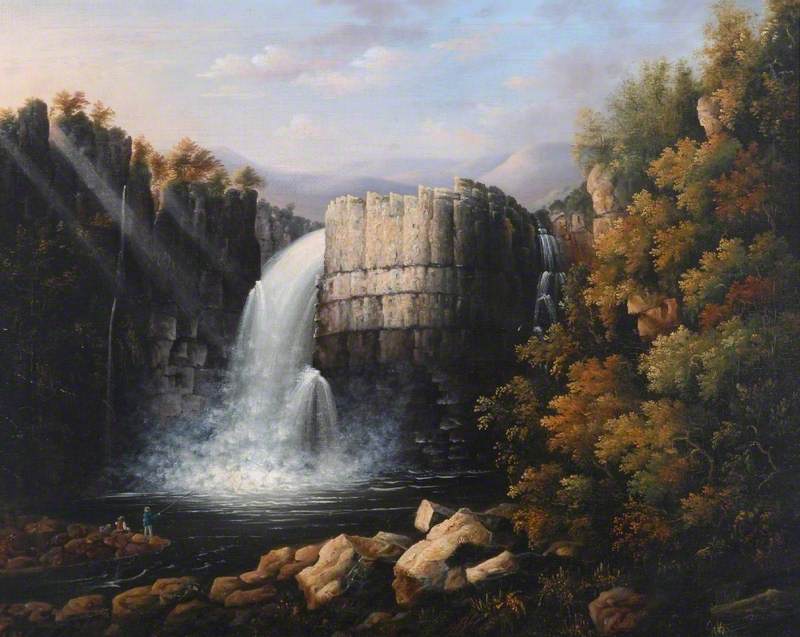 Joseph Miller
Joseph Miller -
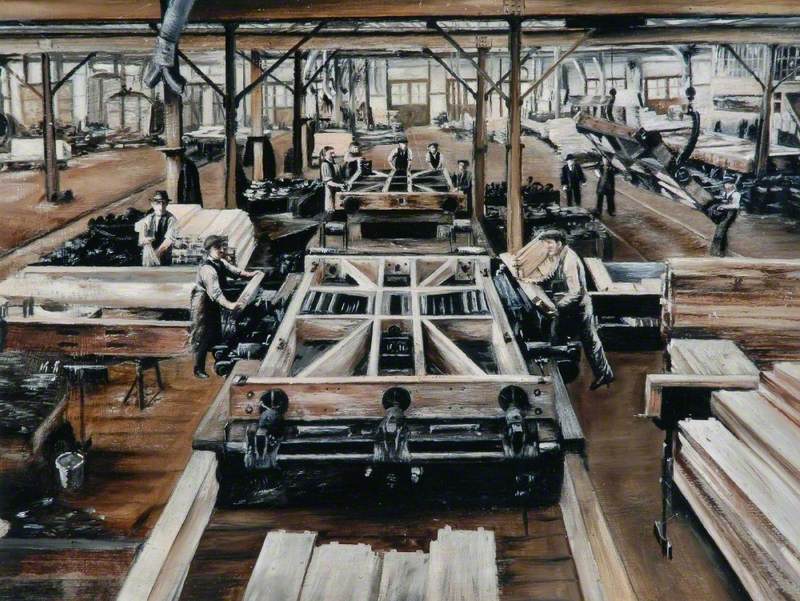 W. W. Neasham
W. W. Neasham -
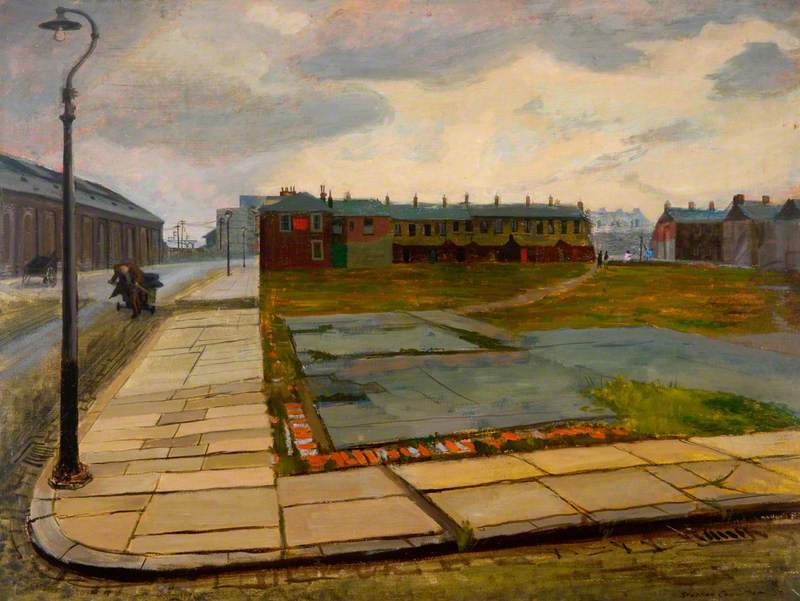 Deryck Stephen Crowther (1922–2007)
Deryck Stephen Crowther (1922–2007) -
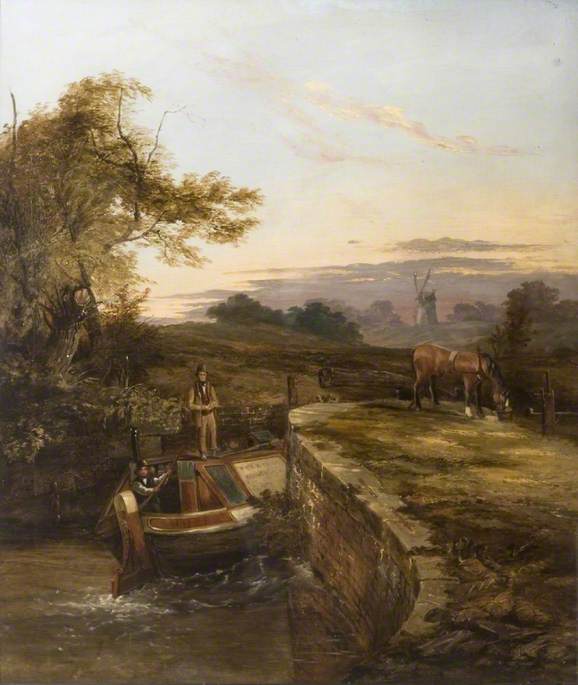 unknown artist
unknown artist -
 Victor William Hobson (1865–1889)
Victor William Hobson (1865–1889) -
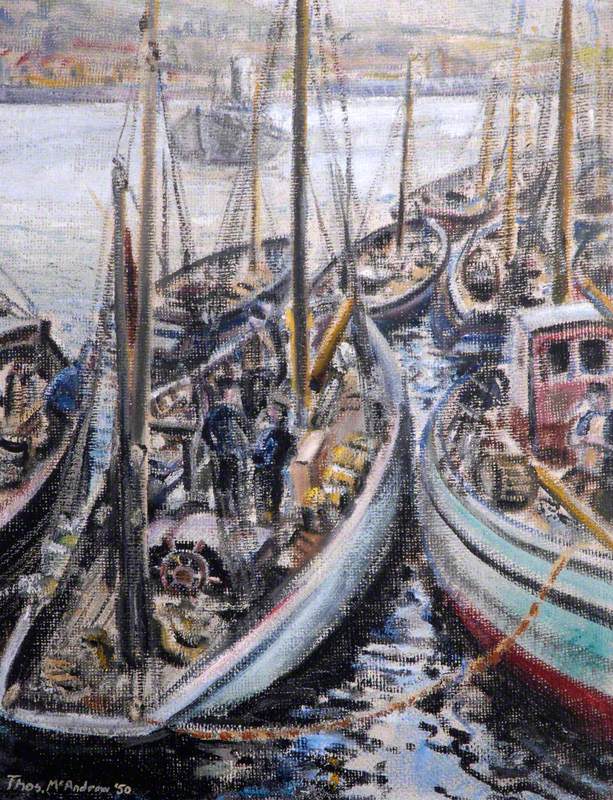 Thomas McAndrew (1916–2002)
Thomas McAndrew (1916–2002) -
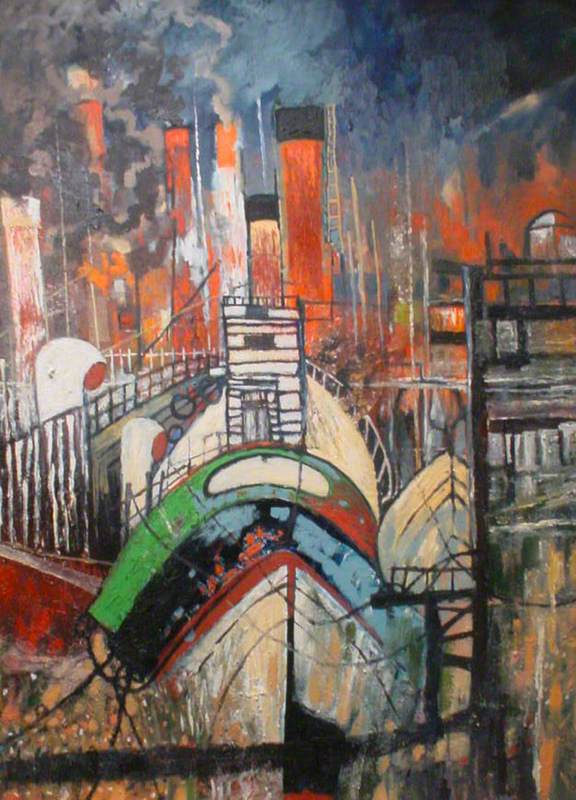 David Watson (b.1944)
David Watson (b.1944) -
 Robert John Watson (b.1945)
Robert John Watson (b.1945) -
 Norman Stansfield Cornish (1919–2014)
Norman Stansfield Cornish (1919–2014) - View all 12
